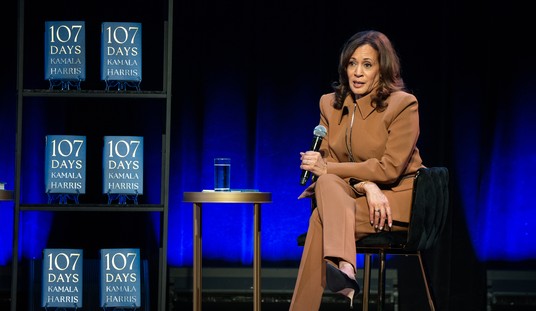=========
=========
Promoted from the diaries by streiff. Promotion does not imply endorsement.
=========
=========

John Roberts’ path to Chief Justice took a circular path in 2005 when he was first appointed to the Supreme Court to replace the retiring Sandra Day O’Connor. With the confirmation process already underway, President Bush removed his name for consideration and re-nominated him to become Chief Justice after William Rehnquist passed away that September.
The Chief Justice of the Supreme Court is a lightning rod for criticism and the reason any Court is referred to as the name of the Chief Justice. We had the Marshall Court, the Taney Court, the Warren Court, the Rehnquist Court, etc. Further, despite the political leanings of any nominee and despite their previous decisions at lower court levels, a President never really knows what they are getting once that person takes their seat on the Court. Perfect examples are Earl Warren nominated by a Republican (Eisenhower) who became the face of one of the most radically liberal Courts. Likewise, Kennedy appointed Byron White often sided with his more conservative compatriots on key issues. And, of course, there is the face of the turncoat nominee: David Souter.
As Chief Justice, the primary and almost only decision that has brought down the wrath of conservatives is his siding with the liberals on the Court to uphold the Obamacare law. But, should one decision define his conservative “credentials?” On balance, Roberts is certainly singularly responsible for preserving the Affordable Care Act as he decided with the liberals on the Court after reframing the key question from one of an abuse of the power of Congress to regulate interstate commerce to one of the taxing power of Congress. It was a tortuous path to get there and it took many words for Roberts to make that justification in his opinion. The fact the law was upheld and it took John Roberts to achieve that is as important than his reasoning for doing so.
From the concurrences, it becomes obvious that the liberals wanted the Court to go further and render the law constitutional under the Commerce Clause. To do so would have so altered the Commerce Clause to have made it obsolete; namely, Congress would then have the ability to regulate just about anything they deemed commercial activity. Eventually, some definitive book will be written about the internal debate on the Court about this decision. For Roberts, however, and the purpose of this article, the frustrating aspect is that he had within his power and ability the opportunity to make a definitive statement: that Obamacare was unconstitutional under the Commerce Clause alone and, if so, the whole law must go. Instead, he relied upon the Taxing Power of Congress and the catch-all Necessary and Proper Clause.
Since and before, Roberts has given us some decisions in which conservatives should delight. For example, the Roberts Court has given us the Heller and McDonald decisions regarding the Second Amendment, Citizens United in the area of Free Speech, the Janus decision as concerns union dues, and most recently upholding Trump’s travel ban. Thus far, they have steered clear of political gerrymandering and altering the political landscape. He has written a scathing dissent in the gay marriage case and when it comes to the Free Exercise and Free Speech Clauses of the First Amendment, he appears to consistently take the conservative side.
What is most frustrating about Roberts in this writer’s view is his avoidance of certain issues coupled with his avoidance of making definitive stances on other issues. Even in the gay wedding cake case out of Colorado, although the baker was victorious, one wonders if the Court would have reached their conclusion absent the documented animus of the Colorado Civil Rights Commission against the baker. Simply, the next time someone will be compelled to go against their religious beliefs, some civil rights commission will be more careful with their public statements.
In the political gerrymandering case out of Wisconsin, the Court and Roberts seemed to signal that there may come a time when some metric will be perfected that will essentially allow courts to circumvent the will of the voters through their elected representatives when it comes to drawing district boundaries. A process that has been in the hands of the political branches of state governments since our founding may one day (possibly as soon as June) be wrested from our elected representatives. If a definitive answer is not rendered, one can expect a plethora of redistricting challenges come 2021.
There have been many cases concerning abortion, affirmative action, prisoner’s rights, and gun control that the Court could have and should have taken, but refused thus leaving liberal lower court decisions stand.
In a 2012 article in Governing titled “John Roberts and Defiance of the Tribe,” author Mark Funkhouser equated Roberts’ decision in the Obamacare case with John Kennedy’s Profiles in Courage tome. He said that courage meant defying your friends, not your enemies and, by implication, Roberts was displaying courage by upholding the Obamacare law thus defying his “friends,” or conservatives.
One has to question that analysis even when he came to the conservative side in key decisions. Roberts seems to reach his most conservative epiphanies when there is nothing to lose. That is not “courage” in this writer’s opinion. For example, his dissent in the gay marriage case could be a conservative manifesto in this area, but no one really reads dissents and they are not legally effectual regardless. It is not courage to take a stance knowing that stance has no real world value.
Further, his defense of the judiciary as if they are the most sanctimonious bunch of humans ever assembled because they don a black robe has infected his jurisprudence on the Supreme Court. This likely explains deciding cases on the most narrow of bases in order to achieve that elusive almost- or actually unanimous decision. Unfortunately, such tendency often ensures a similar case will return to the Court since it creates more questions rather than a definitive answer. It also explains why the Court seems to avoid certain issues like abortion and gun control where lower court decisions and state/local/federal laws seem to lend themselves to deciding these issues on a more definitive basis. Unfortunately, it often leaves liberal court decisions in effect.
The fact is, Roberts likely breathes a sigh of relief when these cases are not taken by the Supreme Court. He does not have to take a stance. He can hide behind the secrecy of the conference where we never find out who decided to take or not take a case of importance to conservatives.
To this writer, this is not a “profile in courage,” but it is the epitome of cowardice. So, the question remains: can John Roberts ever regain his credibility as a conservative? He can start by taking some bold conservative stances on key cases where a definitive answer to a question is resolved, even if it is a 5-4 decision which he seems to avoid like the plague. He can start by reigning in a rogue judiciary as concerns the lower courts where they get to dictate issues of policy better left to the political branches of government. Simply, he can regain his credibility if he showed some courage, not consensus.













Join the conversation as a VIP Member